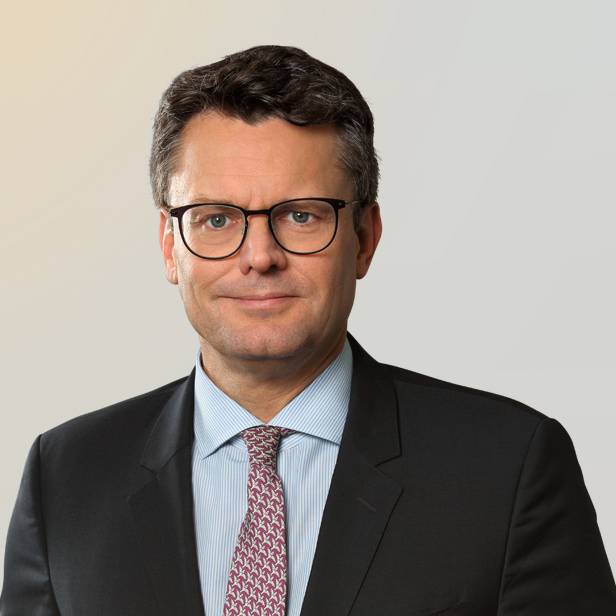Pitchbook | Q&A: The State of Global Lending
View original post from Pitchbook on September 16, 2019 here. ![]()
Given the surge in private credit over the past decade, what are your broad conclusions regarding the state of global lending as we approach 2020? What key trends stand out most to you?
Bob: The global lending market still varies country by country. That hasn’t changed much due to differing sets of regulations—mainly how security and collateral is obtained by lenders and how bankruptcies and restructurings are administered. As a result, you don’t see much activity across borders, especially in the middle market (e.g. a German bank lending to a middle market company in the US). With that said, we have seen private debt funds begin to establish operations in Europe, especially in the UK.
Xenia: On the supply side, the flows of capital into private debt—which have transformed global lending—are to a large extent fueled by monetary easing. Renewed efforts from the European Central Bank (ECB) and the Federal Reserve, will only increase the attractiveness of the loan asset class, especially when it comes to EUR loans (which are floored at zero), given that the Euro Interbank Offered Rate (EURIBOR) is now negative. It is clear that as debt funds have grown in prominence and size, they are able to operate at larger scale and across more regions.
Dominik: Borrowers have become more educated among lending sources than they were even five to six years ago and are therefore moving away from banks to non-bank sponsors. We’ve seen this in particular across mainland Europe. In addition, the ECB and political environment are both supporting the trend away from the traditional banking environment to private debt. Regulators and banks are encouraging private credit suppliers to provide financing more similar to buyout-style debt, as opposed to typical corporate transactions, so traditional banks—which had to be bailed out by taxpayers in the last financial crisis—are no longer exposed to as much risk.
Bob: The regulations that emerged in the wake of the financial crisis were what compelled U.S. commercial banks to pull back from financing PE transactions. From an investor perspective, acceptance and a broader understanding of private debt has also contributed to the growth of the private debt market. As investors saw how the handful of funds that were operating prior to the financial crisis ultimately performed, that further incentivized additional investment in private debt funds.
In your view, what are the defining concerns of the overall lending market worldwide? There is much discussion of the growth in alternative lending across consumer solutions. How has innovation been changing the broader business and/or deal lending market?
Bob: In the US, the primary concerns are all centered around the potential for a recession. Every deal we show lenders and every credit that they examine are all reviewed considering a potential downturn. All lenders we work with are exhibiting that behavior.
Xenia: From a lender’s view, they are interested in how a particular business performed during the last downturn. While Brexit’s impact hasn’t really been material relative to what markets were expecting, it has encouraged a shift in strategies. With UK M&A activity muted as a result of political and economic uncertainty, the market has seen a rise in opportunistic deals such as refinancings and recapitalisations. As the mid-market grows and the traditionally core UK market faces macro questions, we are starting to see further penetration into new regions across Europe. Deals in the Nordics, Benelux and Southern Europe are on the rise with lenders also turning their attention to Central & Eastern Europe.
Dominik: It’s a similar situation across the continent; although frankly, it is difficult to compare companies now relative to their performance during the recession as the overall companies and levels of preparation are completely different. In general, I would say businesses are much more resistant to a recession than they were 10 years ago , as many more enterprises are aware of systemic risk exposure and consequently are more prepared. Given that fact, lenders are still reluctant about activity in cyclical sectors—for example, in Germany, if a business is related to the automotive sector or retail, it is almost impossible to get a deal done unless at a fairly low leverage.
Beyond Brexit and recessions, what are the other primary concerns you are seeing in your markets?
Xenia: The array of bigger risks we are seeing apart from Brexit are primarily concentrated around trade wars, the rise in protectionism and the general perception that we are quite late in the cycle.
Bob: Depending on the degree of a company’s exposure, tariffs are a primary concern. Other than that, we come back to fears of a recession.
Dominik: Especially for the automotive sector in Germany, the ramifications of a currency war and tariffs with both China and the US are top of mind. Brexit is (as for now) less regarded as an issue.
To what degree do you see innovation in terms of lending, or returns to safer harbors?
Dominik: It really is a deal-by-deal situation. If you have a strong credit, then there will tend to be ample liquidity, generous covenant levels and sky-high multiples. As you proceed down the quality chain, interest tends to get higher, restrictions stronger, etc. Interestingly, we have seen some investment (not debt) funds offer to acquire businesses that need liquidity via a minority equity check plus debt financing. Granted, that comes with a hefty price tag as the funds believe the businesses have a financing gap.
Xenia: There is definitely a bifurcation in the market; with an increasing consensus that the market is near the top of the cycle, lenders are managing portfolios with a strong emphasis on downside risks. Subsequently, we have seen a flight to quality with strong proven credits in performing sectors continuing to secure borrower friendly terms, while credits in challenged sectors are facing challenging market reception.
Bob: Although the markets are different, given the lack of cross-border lending, it’s interesting to see how similar the concerns are across the various regions. The US has similar dynamics in that, lenders are very aggressive on strong credits. However, a slight twist we are seeing in the U.S. is not so much an innovation, but rather a reemergence of senior debt-junior capital structures and the usage of mezzanine debt. For the trickier credits, unitranche lenders have grown more conservative on leverage in the current environment and are sticking to traditional covenant packages rather than attempting something new. Meanwhile, we’ve seen mezzanine lenders engage in these situations and even offer minority equity portions, as Xenia mentioned, in order to be flexible—but they are usually pricier.
Xenia: It’s worth noting the syndicated market also has seen a bifurcation, with some deals oversubscribed and others struggling to clear the market. The flight to quality is evident across the board, not just in the middle market.
Dominik: In the middle market, even for the strongest credits, you do not see cov-lite structures. It’s one of the few protections middle market lenders have and is therefore, much rarer. Institutional loan markets have more liquidity and can tinker more with the array of covenants, but in the middle market, the state of affairs is completely different. Covenants are also seen by some sponsors as a helpful tool to keep management focused on performance – this is especially true for smaller deals.
Xenia: I did work on a cov-lite unitranche recently, but to clarify, it was not cov-lite due to the strength of the credit, but rather deal-specific.
Dominik: It’s interesting given instances like that to contemplate how behavior may change, especially on the part of direct lenders, in the event of a recession. Given their incentives, private debt funds may be more eager to help companies through a downturn compared to traditional banks. It’s clear that currently covenants can be approached in a flexible manner, but ultimately, they will still prove important.
How do we see that evolving over the next two to three years? How are dealmakers going to evolve in their approach?
Xenia: The deals coming our way are more challenging. Sponsors are getting increased inbound interest from debt funds on strong credits.
Dominik: We’ll have to adapt to a low-interest environment for the foreseeable future. That will drive plenty of liquidity to alternative investments and allow lenders to reduce their potential return promises to their investors. Direct lenders currently can offer lower margins to their backers than they were able to some time ago; however, this will exert additional pressure on traditional banks as their competitive advantage of low margins is eroded.
Xenia: We’ve observed some debt funds offer pure senior financing in direct competition to the banks in the past year or so. They are willing to compete head-to-head with banks on pricing, whilst providing more flexibility.
Dominik: Germany is traditionally more conservative, as we are an over-banked country with plenty of state-affiliated banks in the middle market. Those banks still hold most of the corporate lending, but now, debt funds are not only targeting the M&A market but also the traditional lending market offering more flexible but also more expensive structures in particular in cases where banks are forced to retreat form lending due to regulatory issues (e.g. mezzanine) It will be interesting to see how long traditional banks in Germany can withstand those pressures.
Bob: It’s a difficult question to answer, frankly, as there are so many key variables that could significantly shape events—especially the ones that have never occurred before, such as Brexit. The market is going to evolve step by step, at a slow pace. Many scenarios defy fundamental analysis, so we’ll have to remain dynamic. Companies nowadays, largely thanks to technology, are better able to understand their core business lines (e.g. inventory, forecasts). That ultimately has led to less risk, as businesses are able to avoid inventory gluts and provide better pricing. In the end, that should help reduce volatility to some degree; if there is a downturn, it won’t be as grave as last time.
From your perspective, what in the current market is underrated, whether as a concern or as a positive trend?
Bob: A more positive trend, in my view, is that high purchase-price multiples are driven in large part by the mix of industries composing overall M&A volume. Certain businesses are going to trade higher (as they should) than others, so the increased level of M&A volume in sectors like tech, healthcare and business services is underpinning the increase in the average enterprise value level. Leverage is consequently elevated as well, but there is validity to both trends.
Xenia: We often get asked what’s different today compared to the last cycle. Leverage multiple are near pre-crisis levels, as is documentation flexibility. However, equity checks are significantly higher today and lender balance sheets are less aggressively levered. So, there is more resilience and more potential for a softer landing.
Dominik: Given those conditions, the whole lending market is more robust. That was the intended effect of regulations, which seem to have by and large succeeded thus far. The whole market—lenders, advisors, law firms—are more educated about potential downsides now, which I think will help reduce risk.
Do you have any parting thoughts?
Bob: Returning to private debt fundraising dynamics, and the record levels in past years and slight decline in 2019, it is much harder for first-time debt funds to raise capital in this crowded environment. Established platforms are better able to close on new vehicles, and thus these platforms are only getting bigger. This enables them to compete on deals that once were only possible through a broadly syndicated process, introducing a new alternative for larger financings.
Xenia: 2019 is expected to be a record-breaking year for direct lending in Europe. However, even though there’s an estimated 80+ private debt lenders operating in Europe, the market is dominated by a handful funds.
Dominik: The banks have completely underestimated private debt funds in general. This strategic error has allowed private debt players to carve out market share and evolve much more quickly than banks in general. In Germany the volume of debt funds has grown nearly tenfold. The development has been truly staggering.
Xenia: For the first time ever in the UK, 2018 saw more deals done in the middle market by debt funds than by traditional banks. Although the market share for alternative lenders was barely over 50% in 2018, so far in 2019 it has been tilting to over 70%.
Summary
-
The current credit environment is unprecedented. Lincoln International discusses how interest rates globally remain historically low or even negative, lenders are adapting their approaches and strategies in order to compete.
- Lincoln International's Capital Advisory professionals discuss key trends, innovations and the state of geopolitical uncertainty on global lending.
- Click here to download a printable version of this perspective.
- Sign up to receive Lincoln's perspectives
Contributors
Meet our Senior Team in Capital Advisory

By linking my experience in debt advisory and mergers and acquisitions, I look forward to delivering flexible and innovative financing solutions to make an impact that matters with long-term target clients, as Lincoln does best.
Daniele Candiani
Managing Director & Co-head of Capital Advisory, Europe
Milan
I build trust with clients by putting their interests first at all times.
Aude Doyen
Managing Director & Co-head of Capital Advisory, Europe
London
My approach with our bankers and clients is to listen, pay attention to detail, anticipate and keep an eye on the big picture.
James Sinclair
Managing Director & Head of Brazil
São Paulo










